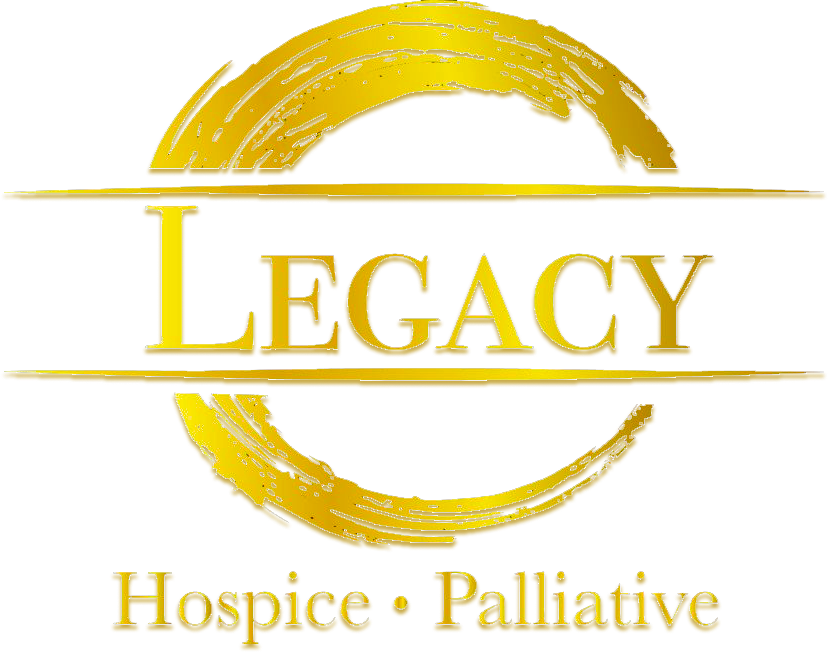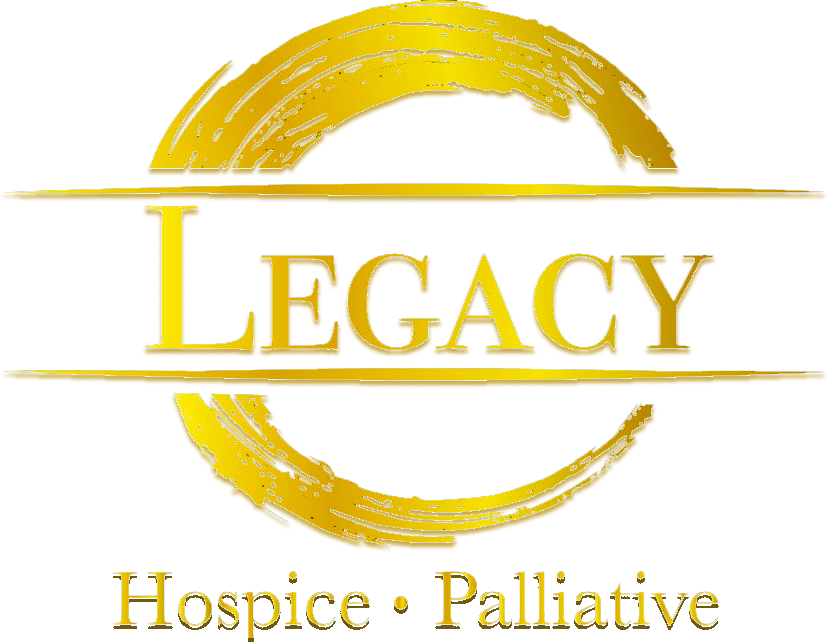The Misconception: Hospice Is Not Palliative Care
Contrary to popular belief, hospice and palliative care offer distinct approaches to patient support. The article explains the key differences by outlining the unique goals of hospice care and the broad benefits of palliative care at any stage. Readers gain clear guidance on how these services serve patients and families in Southern California. This content aims to resolve common confusion and help families make informed choices about care options.
Key Takeaways
- Hospice care offers specialized comfort for patients facing terminal conditions
- Palliative care manages symptoms effectively across various illness phases
- Interdisciplinary teams create customized treatment plans in southern california
- Clear communication supports informed decisions for patients and families
- Digital solutions streamline care coordination and enable prompt treatment adjustments
Understanding the Differences Between Hospice and Palliative Care
Hospice care offers specialized services for patients facing terminal stages by focusing on pain management and tailored support. Palliative care serves patients during different illness phases with unique eligibility and communication methods. Misconceptions persist, though hospice can fit within a broader palliative framework as supported by modern medicine, assisted living practices, and clinical trial findings. Hospice and palliative care frequently embody a holistic approaches to palliative care, focusing on the integration of mind, body, and spirit to improve quality of life for those at the end of life.
Define Hospice and Its Specific Services for Patients
Hospice care in Chino, CA is a service that focuses on ensuring compassionate support for patients facing terminal conditions, offering specialized care plans that include tailored diet considerations and dedicated pain management. The service combines respite care for families, close cooperation with nursing home facilities, and targeted treatment for ailments like ALS to draw on extensive experience, thereby addressing each patient’s unique needs.
Explore the Role of Palliative Care Throughout Illness Stages
Palliative care is a focused branch within the medical specialty that supports patients at various illness stages and works to ease symptoms like shortness of breath and constipation, which can affect overall feeling; it sometimes integrates resources such as the medicare hospice benefit to meet patient needs:
- Initiating early management of discomfort
- Implementing strategies to address respiratory challenges
- Providing interventions for digestive issues
- Coordinating care with available benefit programs
Highlight Common Misconceptions Surrounding Each Type of Care
Some professionals note that a frequent misunderstanding is that hospice care and palliative care serve the same purpose, even though they follow distinct care plans and support strategies. They explain that addressing anticipatory grief and offering guidelines on exercise and nutrition can vary widely, which is why it is often best to make a referral based on accurate information tailored to each patient’s needs.
Discuss How Hospice Can Fit Within Palliative Care Frameworks
Hospice integrates into palliative care frameworks by offering a comprehensive approach that addresses both physical challenges and emotional burdens such as fatigue, stress, and prolonged grief disorder. Experts often use systematic sampling to assess patient responses and tailor support to individual needs. This coordinated method helps reduce pressures that may contribute to divorce and other family disruptions, ensuring a balanced and informed care plan for each patient.
Identify Eligibility Criteria for Hospice Services
Hospice eligibility is determined through a meticulous evaluation conducted by professionals collaborating with primary care providers. This assessment focuses on patients experiencing ongoing suffering and symptoms, such as vomiting, to ascertain whether their condition justifies a specialized approach to care, especially when conventional treatments have ceased to be effective. Additionally, this process includes comprehensive education to ensure that patients and their families are well-informed about the available care options:
- Confirmation by primary care experts of an advanced stage of illness
- Evidence of ongoing suffering that impacts quality of life
- Reevaluation of treatments that have not effectively managed symptoms
- Implementation of education sessions to inform care planning
Explain How Communication Differs in Each Care Approach
Hospice care providers communicate with a gentle tone, addressing issues such as fear, insomnia, and the five stages of grief, including moments of bargaining that signal deeper emotional challenges. In contrast, palliative care teams use clear and practical dialogue to discuss symptom management, ensuring that conversations remain focused on the specific needs of each patient and offering support throughout the progression of grief.
The Goals of Hospice Care for Patients and Families
Hospice care focuses on comfort rather than curative treatment, using tailored medication and careful blood pressure monitoring to support patients. The service builds psychological resilience through compassionate pain management and involves families in key decisions. An interdisciplinary team addresses behavior concerns in a clinic setting, with families offering positive feedback on the emotional support received. Hospice care
Explain How Hospice Prioritizes Comfort Over Curative Treatment
Hospice care prioritizes easing discomfort and preserving dignity rather than pursuing treatments solely aimed at extending life expectancy. Each personalized plan is created using methods similar to a principal component analysis that reviews patient symptoms and monitors blood indicators, with support provided through medicare programs. This compassionate approach respects patient histories, including instances such as pregnancy complications, by focusing on comfort over traditional curative treatment:
| Component | Description |
|---|---|
| Comfort Focus | Emphasizes relief and quality care over aggressive, curative measures. |
| Assessment Method | Uses evaluation techniques akin to principal component analysis to monitor blood and related vitals. |
| Support Framework | Operates under medicare programs and considers individual patient histories such as pregnancy outcomes. |
Discuss Emotional and Psychological Support in Hospice Care
Hospice care providers in Chino, CA offer practical emotional and psychological support that reduces risk and eases the mental strain often linked with serious disease. Relying on guidelines from the national institute on aging and communication methods that enable families to “skip to content” during care discussions, the hospice team delivers precise management that supports overall well-being during difficult times.
Detail the Significance of Family Involvement in Hospice Decisions
Family involvement in hospice care decisions supports precise care planning by addressing each patient’s specific pathology and overall needs. Their active collaboration with nursing professionals builds effective coping strategies and a strong community framework that benefits from approaches seen in the united kingdom:
- Sharing detailed insights on patient history
- Contributing valuable input for personalized care plans
- Working closely with nursing teams to monitor and adjust treatments
- Establishing reliable support networks within the community
Describe the Interdisciplinary Team Supporting Hospice Patients
Hospice patients benefit from an interdisciplinary team that coordinates specialized health care by using palliative techniques to uphold dignity and alleviate any guilt associated with managing health insurance; the team includes professionals from various fields working together to address both clinical needs and emotional support:
- Physicians and nurse practitioners overseeing medical treatment
- Nurses providing daily care and symptom management
- Social workers offering practical support and guidance
- Therapists and counselors addressing emotional challenges
- Insurance specialists assisting with health insurance matters
Outline How Pain Management Is Approached in Hospice Settings
Hospice settings in Chino, CA focus on personalized therapy to manage pain while carefully addressing complications related to chronic kidney disease and cognitive challenges associated with dementia, all amid lingering effects from the pandemic; expert teams use clear guidelines and regular evaluations to minimize any confusion for patients and families: hospice care
| Aspect | Strategy |
|---|---|
| Therapy Options | Customize pain management plans that adapt to each patient’s unique health profile. |
| Dementia & Confusion | Conduct frequent assessments to adjust care approaches and communication. |
| Chronic Kidney Disease | Modify treatment protocols to ensure safety and optimal pain relief. |
| Pandemic Insights | Incorporate recent health data to refine care delivery and address emerging challenges. |
Share Testimonials of Families Who Experienced Hospice Care
Families have provided detailed accounts of hospice support in Chino, CA that helped preserve a cherished memory during stressful times marked by insurance challenges and a breakup in family dynamics, with data reflecting positive outcomes aligned with studies from the american psychological association. Their journey includes:
- Personalized care plans that prioritize comfort and dignity
- Guidance that effectively addresses insurance concerns and emotional strain
- Clear evidence from data supporting the benefits of expert hospice intervention
Debunking Common Myths About Palliative Care
Clarifying a common misconception, palliative care extends beyond end-of-life and supports chronic illness management. Patients with lung conditions and parents facing health challenges benefit from its flexible integration at any treatment phase. Robust statistics and case studies confirm that key indicators align with reduced sadness and improved quality of life.
Clarify the Misconception That Palliative Care Is Only for End-of-Life
Healthcare professionals in Southern California explain that palliative care is designed to improve patients’ overall well-being and is not solely reserved for the moment of death, as it helps manage symptoms affecting breathing and comfort at various stages of illness. They emphasize that the goal is to address pain early, which in turn can lessen grief levels and foster smoother transitions during difficult times. Practical examples reflect that patients benefit from clear, compassionate care plans that focus on quality of life rather than solely on end-of-life concerns.
Highlight the Role of Palliative Care in Chronic Illness Management
Palliative care fortifies chronic illness management by reducing discomfort and improving well-being through a coordinated effort that involves primary care teams, chaplain guidance, and modern technology to share knowledge and address patient denial:
| Component | Function |
|---|---|
| Primary Care Coordination | Maintains continuous oversight and custom support for each patient |
| Chaplain Services | Offers emotional and spiritual support during challenging times |
| Technology Monitoring | Utilizes real-time tracking to promptly adjust care plans |
| Knowledge Sharing | Empowers patients and families through clear, actionable information |
| Addressing Denial | Assists patients in recognizing and managing their health challenges |
Identify Indicators That Palliative Care Is Beneficial for Patients
Health experts observe that patients receiving palliative care often report reduced loneliness while their overall prognosis is carefully tracked, especially when managing conditions such as kidney disease. A skilled physician leads the collaborative team in addressing both physical symptoms and emotion, ensuring that each care plan meets the individual’s daily needs with clear and consistent support.
Discuss the Integration of Palliative Care at Any Treatment Phase
Healthcare providers integrate palliative care during every stage by using structured processes that support individuals facing conditions such as terminal illness and lung cancer, while also incorporating elements of spirituality and educational support similar to a school environment, with medicaid often easing financial concerns:
| Component | Details |
|---|---|
| Terminal Illness Support | Comprehensive care designed to address advanced stages of illness. |
| Lung Cancer Management | Targeted symptom control and quality of life improvements. |
| Spiritual Guidance | Assistance that respects personal beliefs and emotional needs. |
| Educational Resources | Programs and support structures akin to school initiatives. |
| Medicaid Assistance | Financial support to ensure access to comprehensive care. |
Share Facts on Palliative Care’s Impact on Quality of Life
Recent evidence confirms that palliative care effectively improves quality of life by easing physical discomfort, reducing anger, and providing support for conditions like heart failure. Observations from experts indicate that its reliable methods help patients manage stress related to funeral planning and other emotional challenges.
Provide Case Studies Showcasing Palliative Care Effectiveness
Recent case studies in Southern California reveal that structured palliative care improves sleep patterns and minimizes discomfort, as a health professional reported measurable benefits in patient recovery. These case studies offer a solid reference for effective comfort care, with many noting outcomes that seem as if guided by God, leading to greater appreciation for the tailored support provided during challenging health journeys.
Benefits of Palliative Care for Patients at Any Stage
Palliative care alleviates distressing symptoms while offering emotional and spiritual support. It provides individualized care plans and coordinated care among healthcare teams and skilled care providers. Access to complementary therapies aids in substance abuse management, bereavement and guidance. Recent research confirms improved outcomes for patients at every stage. Palliative care
Describe How Palliative Care Alleviates Distressing Symptoms
Palliative care alleviates distressing symptoms by designing personalized treatment plans that actively incorporate effective pain management, physical therapy, and attentive skin care. The care team also manages nausea and considers factors such as ethnicity to provide culturally sensitive and comprehensive support throughout every stage of treatment.
Emphasize Emotional and Spiritual Support for Patients
Providers in Chino, CA integrate a holistic approach to care by offering emotional and spiritual support that improves overall health as part of palliative medicine. Their practice aligns with supportive health policy that guides personalized care plans, ensuring patients receive compassionate attention and effective symptom control at every stage of illness.
Explain the Importance of Individualized Care Plans
Individualized care plans are fundamental in palliative care, ensuring that each patient in Southern California receives treatment tailored to their unique medical profile and personal preferences. Healthcare teams based in Chino, CA area, design these plans to provide precise symptom management and emotional support, setting apart palliative care from hospice services. Integrating a holistic approach to palliative care can further enhance the patient’s quality of life by addressing not just the physical symptoms, but also the emotional and spiritual needs.
Highlight the Value of Coordinated Care Among Healthcare Teams
Coordinated care among healthcare teams strengthens palliative treatments as professionals in Chino, CA combine their expertise to create individualized care plans. This unified approach fosters clear communication and consistent support, helping patients and families throughout every stage in Southern California.
Discuss Access to Complementary Therapies in Palliative Settings
Providers in Chino, CA deliver palliative care with access to complementary therapies that help manage pain, reduce anxiety, and support overall well-being; these tailored treatments give patients alternative strategies to improve daily comfort and emotional balance:
- Professional massage sessions to ease muscle tension
- Aromatherapy practices designed to foster relaxation
- Music therapy to promote positive mood and stress relief
Summarize Research Findings on Palliative Care Outcomes
Recent research confirms that palliative care contributes to better symptom management and improved patient well-being across various stages of illness. Our providers in Southern California use clear, measurable outcomes to adjust and refine treatment plans, ensuring that both physical and emotional needs are met effectively. Evidence shows that an early palliative care approach results in enhanced quality of life and better care coordination, benefiting patients and families alike.
Why Education About Care Options Matters
Empowerment through understanding care choices and active input from healthcare professionals builds confidence in selecting hospice and palliative care. Quality resources guide informed decisions, while early discussions about care preferences smooth family dynamics. Practical tips help patients and families start meaningful conversations about available options.
Discuss Empowerment Through Understanding Care Choices
Accurate education on care options empowers patients and families to make informed decisions that reflect their unique health needs and personal values. This clear understanding helps clarify the differences between hospice and palliative care while guiding individuals toward appropriate treatment choices in Southern California.
Explain the Role of Healthcare Professionals in Education
Healthcare professionals offer clear, practical insights by explaining how hospice and palliative care differ, drawing on years of experience serving patients in Chino and across Southern California. Their straightforward discussions help families understand the available care options, ensuring decisions are based on accurate, customized information that meets each patient’s unique needs.
Identify Resources Available for Learning About Hospice and Palliative Care
Local healthcare providers and public information platforms in Southern California offer a range of materials, including seminars, printed guides, and user-friendly websites, that explain the distinct functions of hospice and palliative care. Our experts in Chino, CA update these resources regularly with evidence-based insights to help patients and families make informed care choices and understand their available options.
Highlight the Need for Early Discussions About Care Preferences
Early conversations about care preferences equip patients and families with the insight needed to select hospice or palliative care that aligns with personal values and clinical requirements. When these discussions occur at the onset of the care process, healthcare professionals in Chino and Southern California work with families to craft clear, tailored care options that reduce uncertainty and support informed decision-making.
Evaluate the Impact of Informed Choices on Family Dynamics
Informed choices regarding care options noticeably improve family dynamics by ensuring all members clearly understand the roles of hospice care versus palliative care. Healthcare professionals in Southern California report that families who receive detailed education can make decisions that support coordinated, compassionate planning, leading to reducing stress and fostering a collaborative environment during challenging health journeys.
Provide Tips on Initiating Conversations About Care Options
Experts recommend opening care options discussions with straightforward questions about patient needs and current symptoms to help differentiate between hospice and palliative care. A direct conversation that focuses on treatment goals, support services, and available resources in Chino, CA can assist families in making well-informed decisions.
Future Perspectives on Hospice and Palliative Care
Future perspectives in hospice and palliative care address shifts in service delivery, new innovations, and vital research driving care development. Experts examine potential challenges, technology’s evolving role, and public awareness improvements to support patient needs. Each topic will offer practical insights for advancing hospice and palliative care in Southern California.
Explore Anticipated Changes in Hospice Service Delivery
Our agency health experts in Chino, CA foresee a transformation in hospice service delivery driven by new technology and refined care protocols that will benefit patients and families throughout Southern California. Current initiatives show improvements in areas such as advanced telehealth, better team coordination, and personalized care plans:
- Implementation of real-time telehealth systems
- Stronger collaboration among interdisciplinary teams
- Customized treatment protocols based on patient data
Discuss Innovations in Palliative Care Practices
Innovations in palliative care practices in Southern California drive real progress by using advanced monitoring systems and clear care protocols that allow teams to adjust treatment plans promptly. These enhancements help clarify the differences between hospice and palliative care, ensuring patients receive support tailored to their unique needs at any stage.
Highlight the Importance of Research in Care Development
Ongoing studies in Chino, CA continue to shape hospice and palliative care practices by informing the development of tailored treatment strategies that address patient needs. Experts rely on clear, data-driven research to update care protocols and refine communication methods, ensuring families and patients throughout Southern California receive consistent, effective support.
Identify Potential Challenges Facing Hospice and Palliative Care
Healthcare professionals in Chino, CA note that potential challenges for hospice and palliative care include misinterpretations of care intentions, coordination barriers among care teams, and insurance limitations. Other hurdles involve gaps in public education and unclear communication regarding service eligibility, which lead to difficulties in ensuring consistent patient support and resource allocation:
| Challenge | Description |
|---|---|
| Misinterpretation of Care Goals | Families and patients sometimes confuse hospice care with palliative care, complicating care planning. |
| Service Coordination Barriers | Communication gaps among healthcare teams may delay timely interventions and coordinated support. |
| Insurance Limitations | Restricted coverage and funding challenges hinder the implementation of seamless care services. |
| Public Education Gaps | Lack of clear, accessible information about care options results in uncertainty during treatment decisions. |
Assess the Role of Technology in Enhancing Patient Care
Advanced digital solutions are reshaping patient care in hospice and palliative settings in Southern California by enabling remote consultations, real-time monitoring, and efficient data sharing. These digital platforms allow healthcare teams to adjust treatment approaches in response to patient needs and clinical data: palliative care
- Telehealth consultations for prompt evaluations
- Real-time monitoring systems for consistent patient assessment
- Digital data analysis to inform personalized treatment plans
- Communication tools that streamline coordinated care
Share Thoughts on Improving Public Awareness of Care Options
Healthcare experts in Chino, CA stress the importance of clear education to improve public knowledge on care options, particularly when distinguishing hospice from palliative care. They recommend community forums, accessible printed materials, and direct involvement by local health professionals to support informed decisions:
- Community workshops that present clear care distinctions
- User-friendly guides for patients and families
- Direct outreach by trusted healthcare providers
- Interactive online resources that simplify complex information
Frequently Asked Questions
What distinguishes hospice and palliative care?
Hospice care supports individuals nearing life’s end with emotional and practical aid, while palliative care focuses on relieving symptoms at any stage. Both models assist patients and families in Chino, CA and across Southern California.
What are the care goals for hospice patients and families?
Hospice care prioritizes effective symptom control, comfort, and clear guidance, while ensuring emotional, social, and practical support for patients and families managing terminal illness.
What myths exist about palliative care?
Common myths suggest that palliative care signals impending death or denies curative treatment. In reality, palliative care supports well-being while patients continue active treatments, helping manage symptoms and boost quality of life.
What benefits does palliative care provide at various stages?
Palliative care provides symptom control that alleviates pain, nausea, and fatigue while offering emotional support and assisting patients with treatment decisions. It improves comfort and quality of life at different phases of illness.
How will hospice and palliative care evolve in Southern California?
In Southern California, hospice and palliative care will expand service options in Chino through innovative technology, customized patient care, and stronger community collaboration, providing improved support for individuals and families managing serious health conditions.
Essential Key Takeaways for Understanding Hospice and Palliative Care
Misunderstanding the roles of hospice and palliative care often leads to care plans that do not fully match a patient’s needs. Hospice care focuses on providing comfort and specialized support during advanced stages of illness, while palliative care manages symptoms throughout all phases of treatment. Healthcare professionals clearly explain these differences to assist families and patients in making well-informed decisions.






